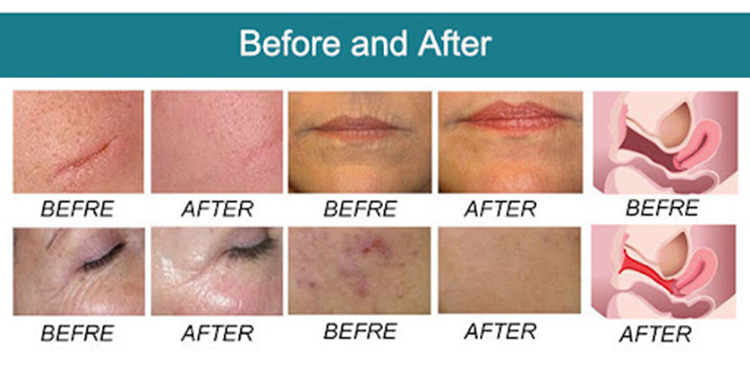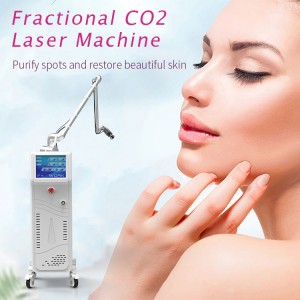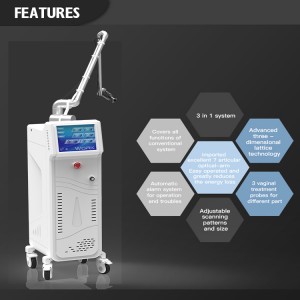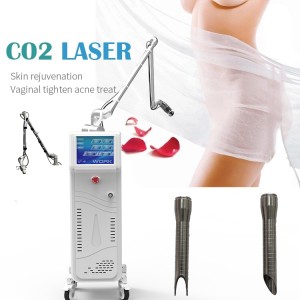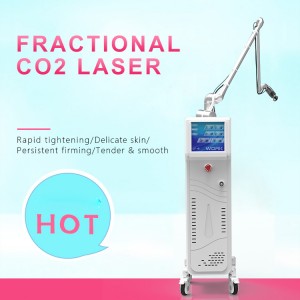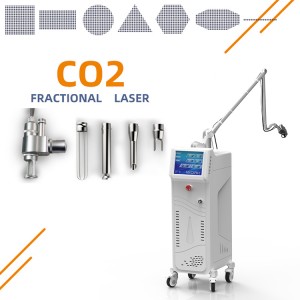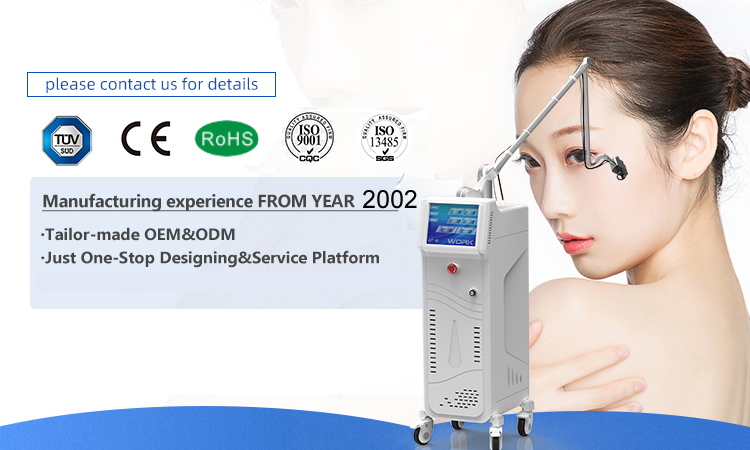
The fractional CO2 laser emits a laser beam through a laser tube, and the laser beam is divided into many microscopic beams to produce a smaller spot than a general CO2 laser (glass tube). The treatment head can evaporate the outermost layer of the entire large surface of the skin through thousands of tiny micro laser wounds evenly distributed on the skin, but leave a healthy, untreated skin area between them, with lower collagen The layer stimulates the renewal and repair of the dermis. Therefore, the heat of the laser will only penetrate deeply into the injured area; the skin surface now has only tiny superficial wounds instead of large, red, exuding burns. In the process of skin self-peeling, a large amount of collagen will be produced to make the skin younger. After a certain recovery, the new skin will be significantly smoother.
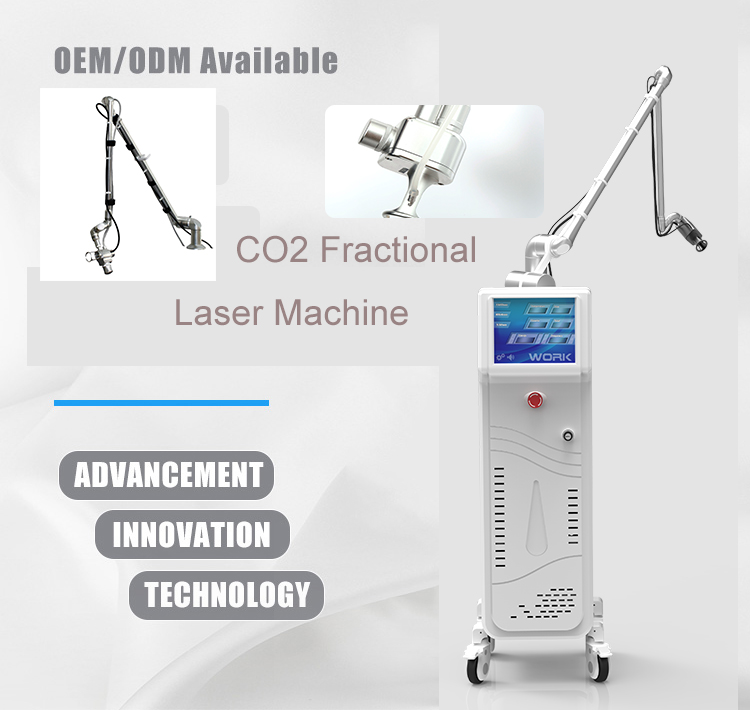
| The type of laser | Carbon diode laser |
| Wavelength | 10600nm |
| Power | 40W |
| Work mode | continuous |
| Laser device | American Coherent CO2 laser |
| Cooling system | wind cooling |
| Dot interval | 0.1-2.0mm |
| Light transfer system | 7 Joint hinged arm |
| Input power | 1000w |
| Operating voltage | AC220V±10 %,50HZ AC110V±10%,60HZ |
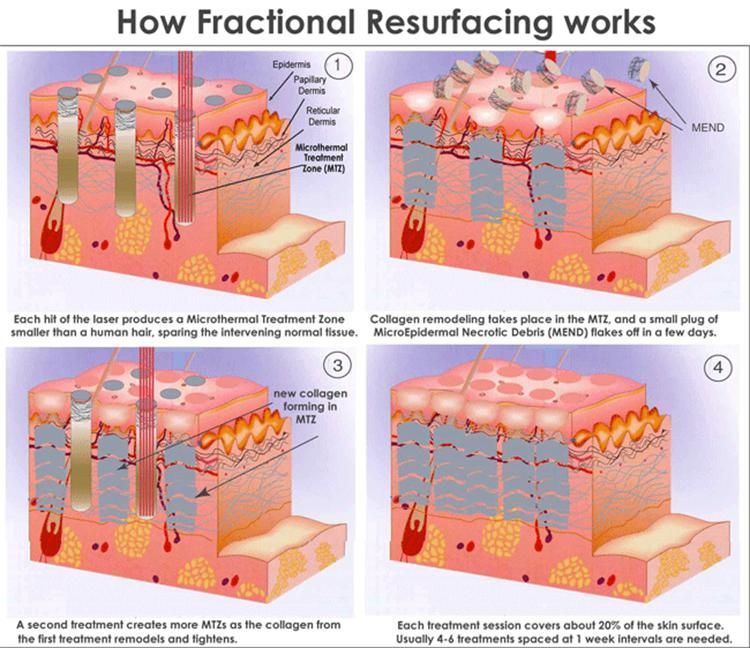
How Fractional Resurfacing works?
①Each hit of the laser produces a Microthermal Treatment Zone smaller than a human hair,sparing the intervening normal tissue.
②Collagen remodeling takes place in the MTZ,and a small plug of MicroEpidermal Necrotic Debris(MEND)flaks off in a few days.
③A second treatment creates more MTZs as the collagen from the first treatment remodels and tightens.
④Each treatment session covers about 20% of the skin surface.Usually 4-6 treatment spaced at 1 week intervats are needed.
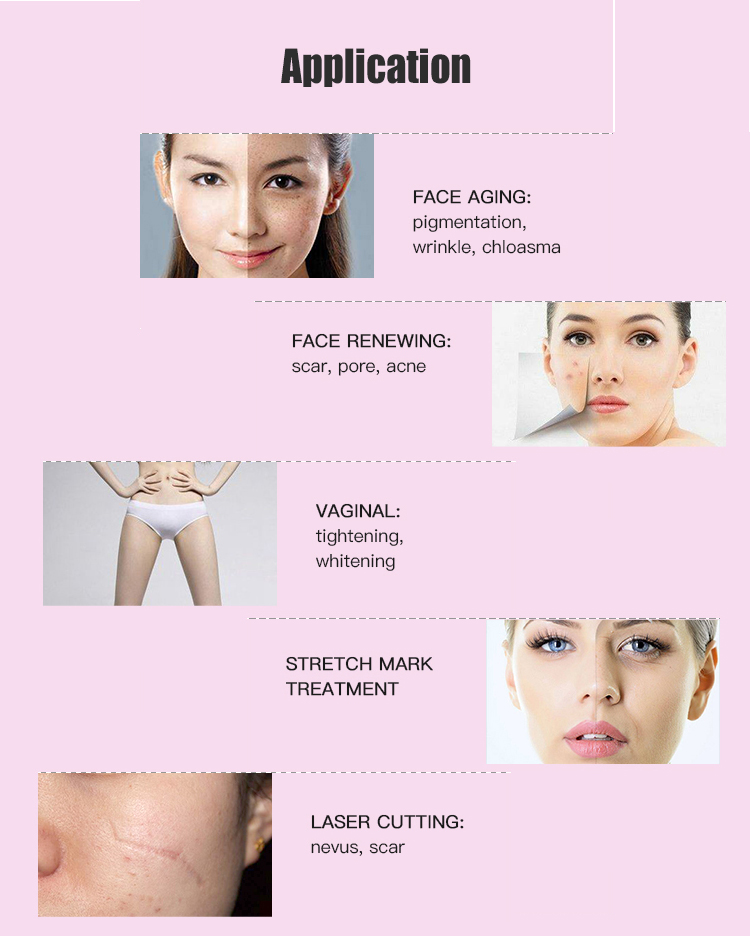
CO2 laser skin resurfacing can be used to treat:
Fine and deep wrinkles Age spots Uneven skin tone or texture Sun-damaged skin Mild to moderate acne scars Large pores Superficial to deep hyperpigmentation
